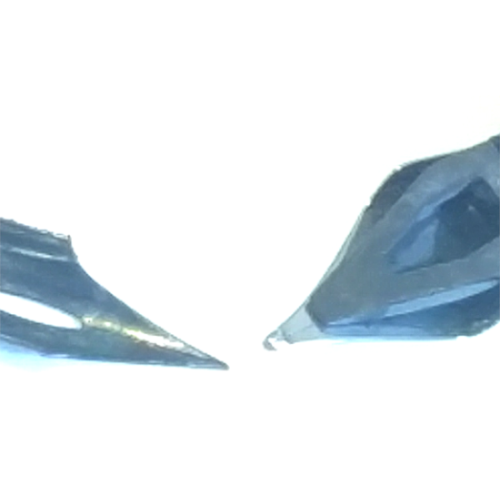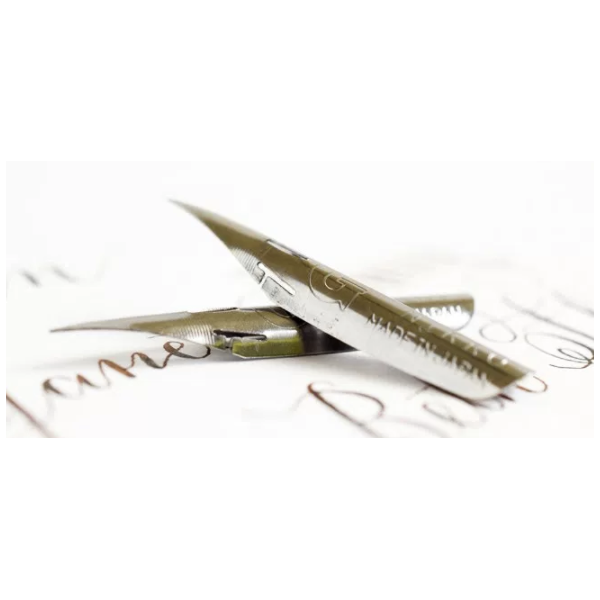- Fountain pen nibs are fed ink from inside the fountain pen. Dip nibs are periodically dipped into a container of ink.
- Fountain pen nibs transport ink down the channel from the breather hole to the tip Dip nibs transport ink from the entire surface of the nib to the tip.
- Fountain pen nibs are one part of a larger mechanism. The other parts are the feed and the section. Dip nibs work all by themselves.
- Fountain pen nibs are usually symmetrical on the horizontal axis. A straight line can often run across the top of a nib from the back to the front. Dip nibs can have a convoluted surface geometry, especially when the tip bends down for extra flex.
- Fountain pen nibs are built to last. Dip nibs are not. A fountain pen nib is usually made from material such as gold alloy, bronze, or stainless steel that can last 100 years. Dip nibs are usually made from cheap spring steel that can bend, snap or rust in a few days.
- Fountain pen nibs are tipped with durable material so they can move in all directions (360 degrees). Dip nibs are not tipped. Often they are finely pointed to draw hairlines. This means they cannot move in any direction. They are usually constrained to a scope of less than 90 degrees or one quarter of a circle.
- Fountain pen nibs are easier to control. Dip nibs are more sensitive to the slightest change hand pressure and direction. Dips nibs can fly out of control easily. It takes longer to learn how to draw with dip nibs than fountain pen nibs.
All this means sticking a dip nib into a fountain pen is not sufficient to get the dip nib to behave like a fountain pen nib. Most dip nibs will never behave like fountain pen nibs. That's good in one sense. You can get more expressive lines from flexible dip nibs.
That's bad in another sense because it's difficult to tame dip nibs and get the most out of them. Dip nibs can have a mind of their own. They can draw marvelously beautiful lines, but they can also rust, bend and snap, splattering ink everywhere.
Cheers and Happy Scribbling!



